Boatbuilding creates a lot of dust, and to keep it from spreading everywhere, including into my lungs, I have several vacuum systems to collect it. I have a two-bag dust collector that gathers the coarse sawdust from my tablesaw, jointer, and thickness planer, and I rely on two shop vacuums to catch the fine dust coming from sanders and to clean up whatever winds up on the floor and workbench. The filters in those two vacuums need to be cleaned periodically, and it’s a job I don’t much like. When it was time to clean a filter, I used to take it outside, hold it in an open grocery bag, and shake it. I wore an N-95 mask to protect myself from the powdery dust that drifted up from the bag.
There had to be a better way, and it didn’t take long to find one: let centrifugal force do the job. I’d already figured that out with my food processor: Rather than do an unavoidably ineffective job with a spatula, I pour out the blended batter and spin the blade in the empty processor bowl. It’s instantly clean. Spinning a shop vacuum filter is equally effective. All it takes are a couple of plywood discs, a machine screw with washers and a nut, and an electric drill. To contain the dust, a 5-gallon bucket and a piece of plywood big enough to cover its top will do the job.
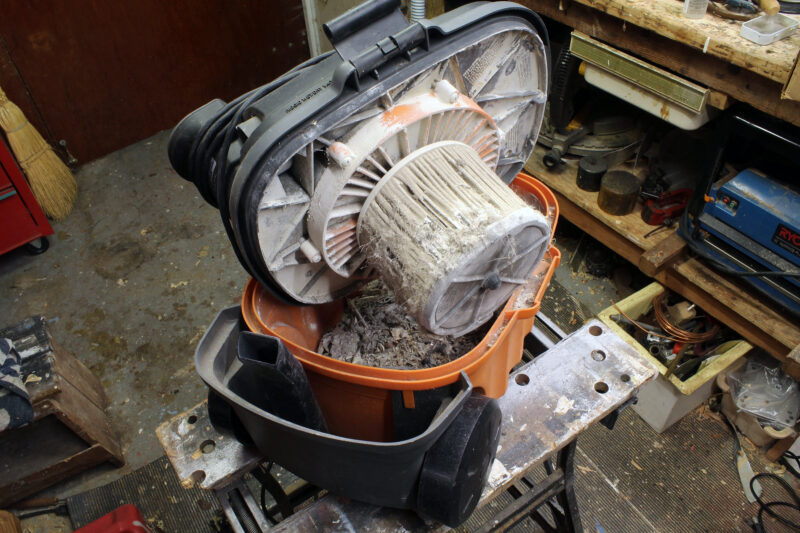 Photographs by the author
Photographs by the authorMy smaller shop vacuum had apparently been used to clean up after drywall work, and its filter was coated with compacted dust along with a variety of other debris. I had been given this vacuum, and it may have been used for many jobs without having the filter cleaned.
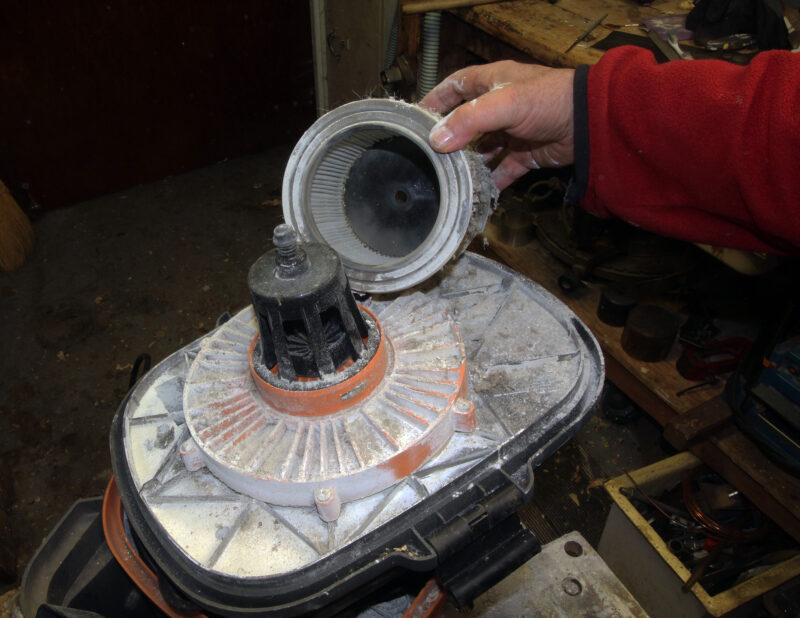
After removing the filter, I measured its inside diameter to make a plywood disc to fit.
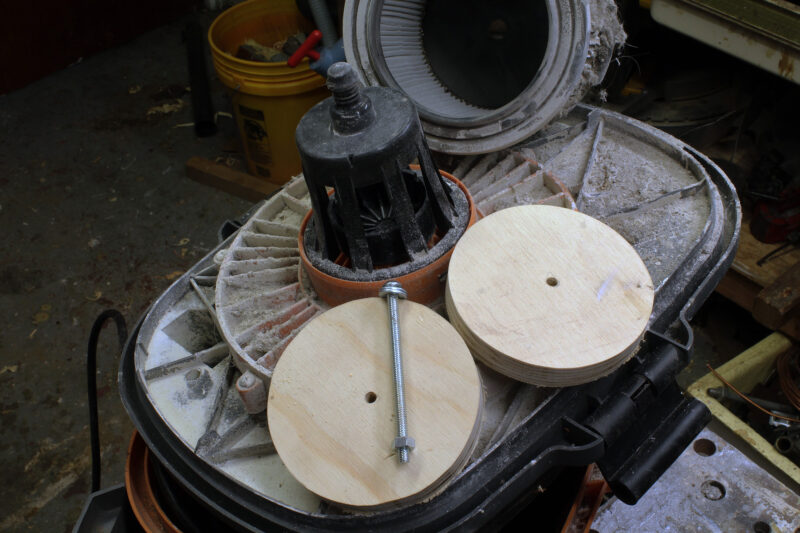
Two plywood discs with 1⁄4″ holes in the center and a 3 1⁄2″ machine screw with its 1⁄4-20 nut and two washers are ready to install.
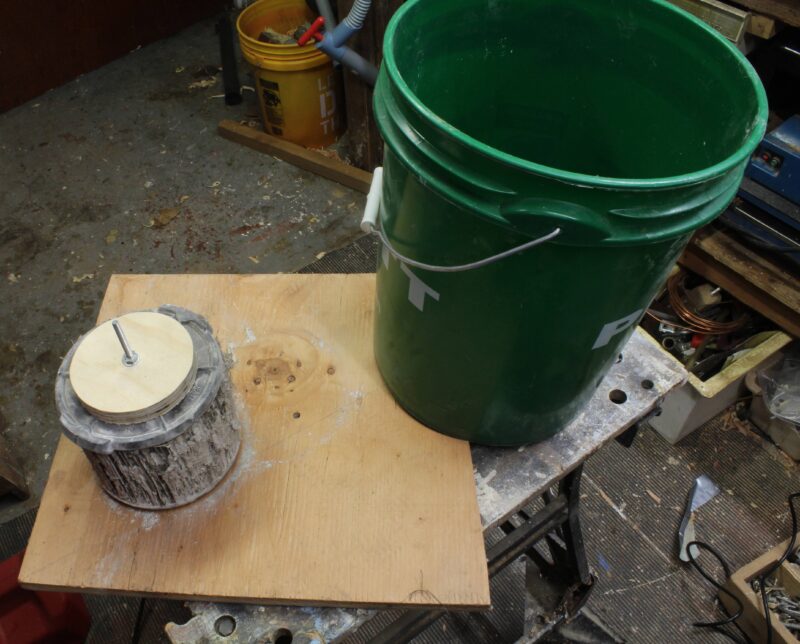
With the two discs sandwiching the end of the filter and held tight with the nut, the disc is ready to spin. The bucket will collect the dust, and the plywood square, with a 1⁄4″ hole for the machine screw, will contain whatever gets airborne.
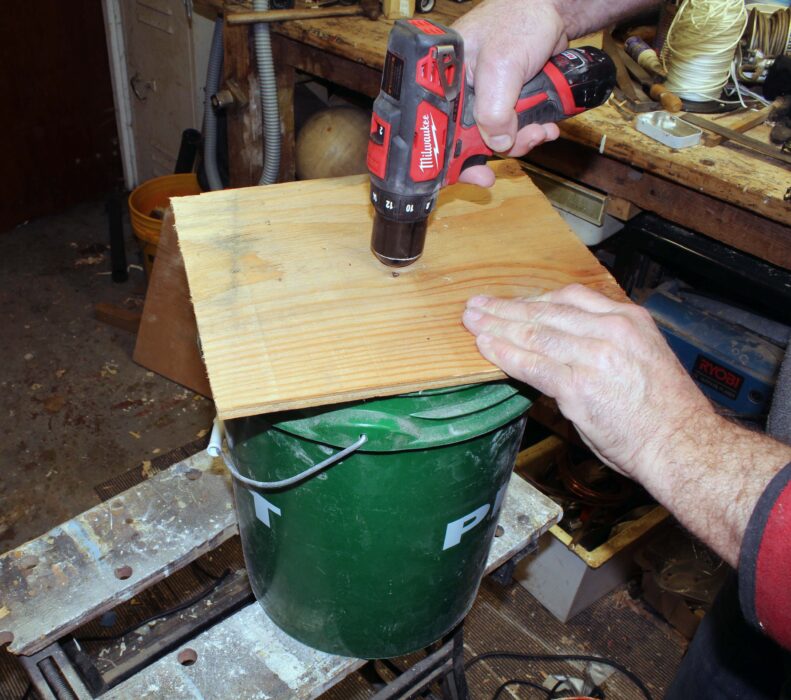
Spinning the filter clockwise will loosen the nut, so the drill is set to run in reverse. The filter will wobble when it comes up to speed.

After a spin, most of the debris has been thrown off the filter. A few bits of caked dust in between pleats needed a little coaxing to break them up. Another spin finished the job. The drill’s chuck jaws can press into the machine-screw threads and the nut won’t come off the end as freely as it went on, but a wrench will coax it around.
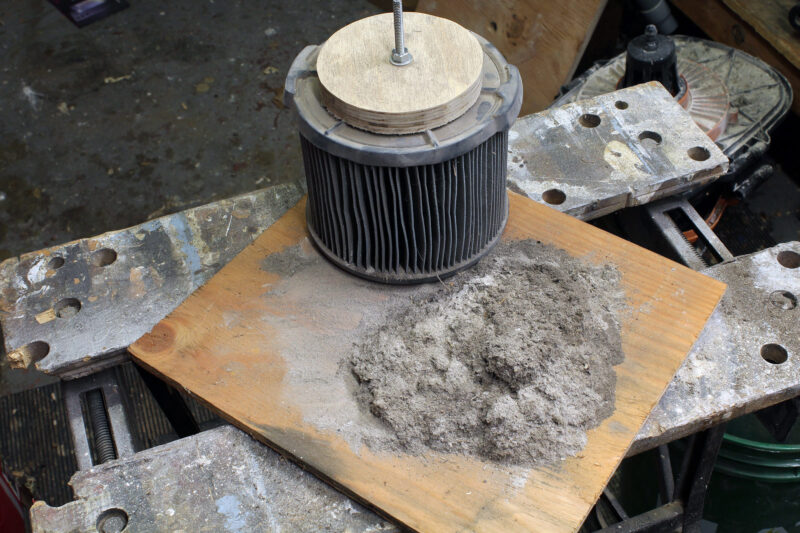
This pile of dust came out of the filter. When the cleaned filter was put back into the vacuum, its suction was greatly improved.
While spinning a filter can effectively remove the material that it collects, preventing it from getting clogged in the first place will reduce how frequently you need to clean it. There are dust-separating cyclones that can remove debris before it gets to the shop vacuum. Unfortunately, these units are about as big as the vacuum and make it awkward to move the combination around and in and out of the shop. Inexpensive nylon mesh pool-skimmer socks happen to fit over shop vacuum filters and can catch debris. The dirty sock can then be removed, the debris shaken off, and the sock used again. Some of the finest dust can still get to the filter, yet it can do its job well without being excessively burdened by the coarse material that the sock collects.
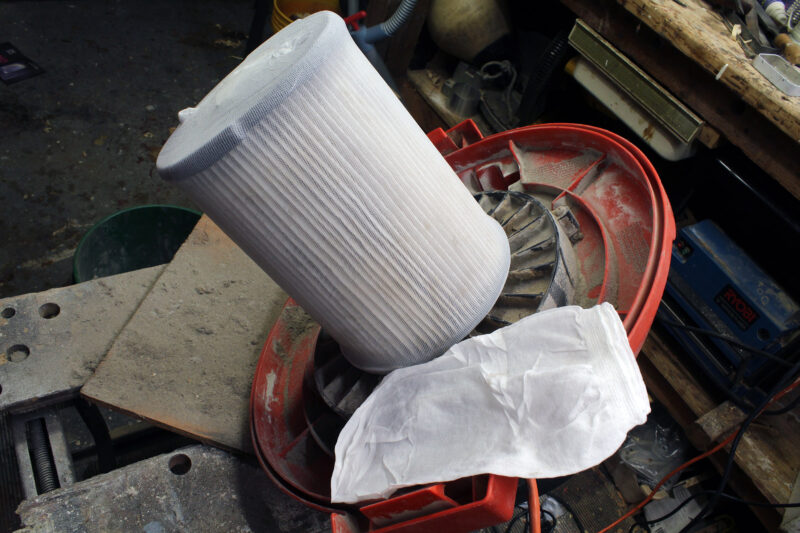
I had recently replaced the filter on my larger shop vacuum, and to keep it from getting clogged quickly I pulled a pool-skimmer sock over it. Another sock is in the foreground to show its size before being stretched over the filter.
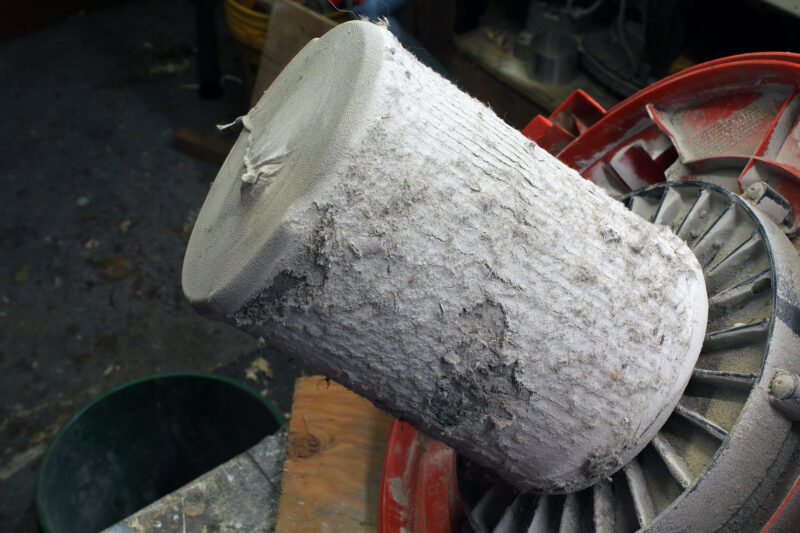
A good test of the sock was to vacuum the debris from my small vacuum, including the dust extracted from its filter, into the large one. That dust immediately gathered against the sock.
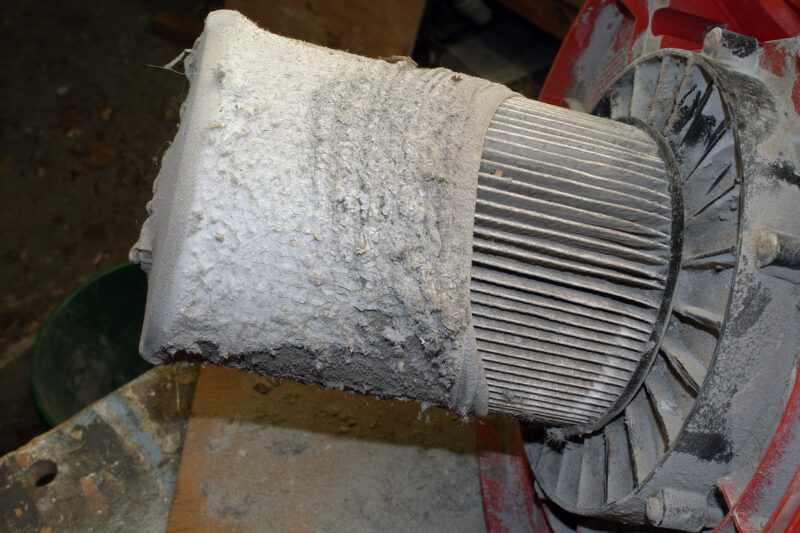
To get rid of the dust, I just needed to remove the sock and shake it into a garbage bag. The filter is no longer completely clean and white, but it doesn’t have a thick coating that would reduce the airflow.
A well-maintained shop vacuum will be a more effective tool, and the less time and mess that’s involved in keeping its filter clean, the less reluctant you’ll be to take care of it.![]()
Christopher Cunningham is the editor of Small Boats.
You can share your tips and tricks of the trade with other Small Boats readers by sending us an email.




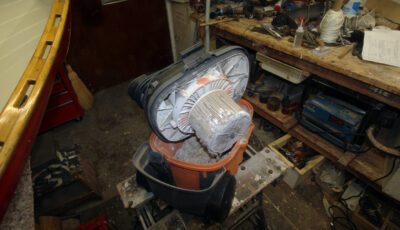
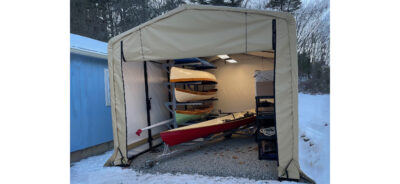
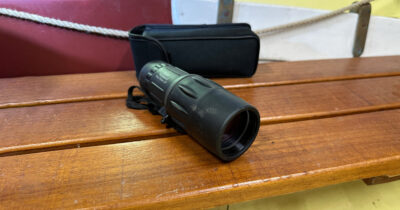


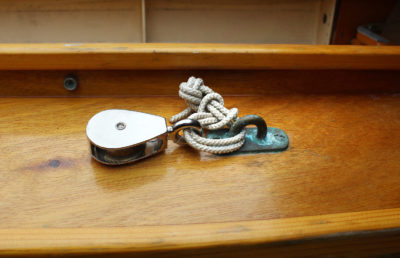
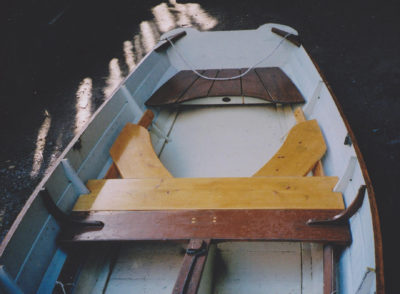
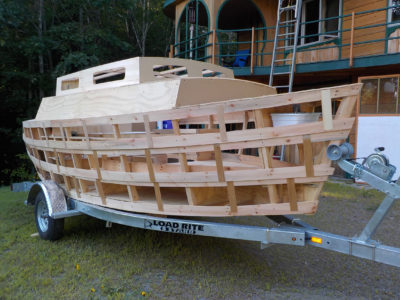
I tried the pool sock and it definitely helps. Lately I’ve started buying the bags that wrap around the inside of the vacuum. They attach where the hose comes in and follow the contour of the tank leaving the filter in the middle with no direct exposure to dust. When full, you pull it out like a stand-up house vacuum and toss it. This only works for dry material since the bags are made of paper.
This may be the best how-to article I’ve read in the past I-don’t-know-how-many years! It makes, not only, one of the most tiresome workshop chores easy and fast, it also does the same in the kitchen. It will definitely increase my usage of both my vacuums and my blenders. Eureka!
I think this would be a good use for that old 120v drill in the drawer. Much faster than battery ones.
I used my old plug-in drill and the filter did indeed spin faster. It also wobbled more. To take advantage of a faster spin, the open end of the filter need a fixture to keep its center on the drill’s axis of rotation. The cordless drill is fast enough.
Alternatively, buy a fibreglass filter (mine has lasted 10+ years) and clean it by spraying water from a hose from the inside. Let it dry thoroughly before re-assembling.
Good idea! Would it help to put a nut, then a lock washer then more nuts and lock washer on the end of the bolt to give the drill a hex shaped thing to grab onto in lieu of chewing up the threads? A hex is obviously great for a 3-jaw chuck.
If I recall correctly, a 1/4-20 nut takes a 7/16″ wrench and common drill chucks have a 3/8″ capacity. Perhaps grinding or filing 3 flats on the bolt, or just taking the sharp edges off its threads would do the trick.
Great idea…for both kitchen and shop vac! In terms of centering, I would cut discs for top and bottom that fit the inside diameter of the filter and glue them, on center, to larger discs. that way the smaller discs hold the filter on center as it spins.
spot on my friend
Great tip for a constant problem in my garage and basement. Very good solution I’ll be trying very soon. Thanks!!!!
A cyclone separator mounted on a bucket works pretty well to catch most of the stuff before it gets to the filter. Eventually the filter does need cleaning, I will try your idea, Chris.